Are you a horse owner or rider looking to strengthen the bond with your equine partner?
Understanding how horses communicate through body language is key to earning their trust and building a strong relationship based on mutual respect.
As social animals and natural prey, horses rely heavily on their instincts to survive, and recognizing their behavior cues can help you interpret their messages correctly.
In this post, we will explore the signs that indicate a horse trusts you, how to recognize them, and the benefits of building trust with your horse.
We will also discuss the importance of understanding equine behavior and body language, providing practical tips and strategies for interpreting your horse’s messages correctly.
Table of Contents
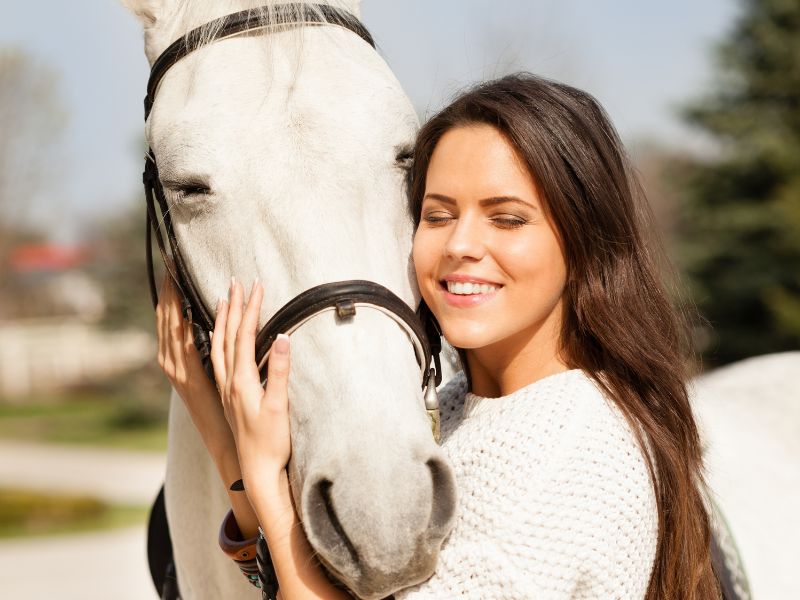
Understanding Equine Body Language
Horses have their own unique way of communicating with us, and understanding their body language is crucial for interpreting their behavior correctly.
In this section, we will explore the importance of understanding equine body language, the cues that horses use to communicate with us, and how to establish a baseline understanding of a horse’s normal behavior.
The Importance of Understanding Equine Body Language
Interpreting equine body language requires a discerning eye and an understanding of the individual horse’s behavior patterns and history.
Knowing your horse’s personality and how they react to different situations can help you read their body language more accurately.
Being aware of their body language allows you to gauge how a horse is feeling, which is essential for establishing trust, maintaining a healthy relationship, and ensuring their well-being.
Establishing a Baseline for Normal Behavior
To accurately assess changes in your horse’s behavior, it’s important to first establish a baseline of their normal behavior patterns.
Spend time observing your horse in various situations, such as during feeding, grooming, and riding, to develop a clear understanding of their typical responses and reactions.
This baseline will enable you to recognize deviations, which may indicate stress, boredom, illness, or injury, and act accordingly to address the issue and maintain your horse’s well-being.
Body Language Cues
Horses communicate their thoughts and feelings through subtle changes in their posture, expression, and movements.
Some common body language cues include:
- Floppy ears: Relaxed, drooping ears can indicate that a horse is calm and at ease.
- Blinking eyes: Frequent blinking may signal that a horse is processing information or trying to relax.
- Lowered head: A lowered head often signifies relaxation or submission.
- Licking and chewing: These actions can indicate that a horse is processing information or attempting to relax from stress.
- Yawning: Yawning can be a sign of relaxation, stress relief, or boredom.
Relaxation vs. Internalization of Stress in Horses
Stress can have a negative impact on a horse’s health and performance, and it can increase the risk of injury.
Horses can experience stress due to various reasons such as structural injury, being away from home, or past traumas.
It’s important to differentiate between relaxation and internalization of stress, as the latter can lead to behavioral issues if not addressed.
Relaxed horses show a lower heart rate, a soft expression, and are willing to interact with their surroundings.
While horses that internalize stress may appear calm but have an elevated heart rate and exhibit behavioral issues such as cribbing, weaving, or stall walking.
Therefore, it is essential to monitor horses for signs of internalized stress and take necessary actions to avoid severe issues such as ulcers, colic, and lameness.
One way to reduce stress in horses is through relaxation techniques such as massage, friction on the horse’s withers, or grooming, which can help reduce cortisol levels, a hormone released in response to stress.
Creating a calm and comfortable environment for horses and allowing them to interact with other horses can also help reduce stress.
Recognizing relaxation cues in horses can help identify when a horse is stressed and take measures to reduce it
Tips for Recognizing and Interpreting Equine Body Language
To better understand your horse’s mood and behavior, pay close attention to their ears, eyes, tail, and overall posture.
Some examples of body language cues and their meanings include:
- Pinned back ears: This may indicate aggression or fear and should be approached with caution.
- Tense tail: A tense tail can signify discomfort, irritation, or fear.
- Relaxed posture: A horse with a relaxed posture and soft eyes is likely to be calm and trusting.
By learning to recognize and interpret equine body language, you can better understand your horse’s behavior, build a stronger relationship based on trust, and ensure their well-being.
Remember that each horse is unique, and their body language may vary. Consistently observing your horse and adjusting your interactions accordingly will help foster a strong, trusting bond.
9 Signs That a Horse Trusts You
Building trust with your horse is a gradual process that requires patience and understanding.
As you develop a strong bond with your horse, they will exhibit various signs of trust.
Recognizing these signs and understanding your horse’s body language is essential for fostering a deep connection.
Here are some of the signs that indicate a horse trusts you:
1. Comes When Called
When a horse trusts you, they will respond to your call and approach you willingly.
This behavior demonstrates that they associate your presence with safety and positive experiences, making them more likely to follow your guidance and leadership.
2. Approaches You
A trusting horse will approach you without hesitation, showing that they feel secure and comfortable in your presence.
This can be particularly telling in a pasture or large paddock, where a horse has the option to maintain distance but chooses to come closer to you instead.
3. Stands Quietly To Be Handled And Saddled
A horse that trusts you will remain calm and still while being handled, groomed, or saddled.
This behavior indicates that they trust your intentions and feel at ease during these activities.
It’s important to maintain a gentle, patient approach during these tasks to reinforce the horse’s trust in you.
4. Shows Relaxed Body Language
When a horse trusts you, they will exhibit relaxed body language, including a calm demeanor, a lowered head, a soft eye, and a relaxed tail.
These cues indicate that the horse feels secure in your presence and is at ease with your touch and handling.
Look for consistent signs of relaxation, as occasional signs may simply indicate the horse is momentarily comfortable.
5. Allowing You Near While Lying Down
A true sign of trust and love, as horses are vulnerable when lying down and allowing you near is a big gesture.
Horses are vulnerable when lying down, so if your horse allows you to approach and touch them while they are lying down, it’s a clear sign that they trust and love you.
6. Lowering Its Head While Being Bridled
When a horse lowers its head while being bridled, they are showing submission and trust.
This behavior demonstrates that they are comfortable with you handling sensitive areas around their head and face, and trust your guidance during this process.
7. Displays Affection
A trusting horse will show signs of affection towards you, such as nuzzling, resting their head on you, nudging, or grooming you back.
These actions indicate that the horse views you as a friend and a trusted member of their social group.
It’s important to reciprocate this affection by offering gentle pats, scratches, or grooming in return.
8. Breathing on Your Face
A sign of respect and trust, as horses see you as part of their family and show affection by gently blowing air on you.
If your horse gently breathes on your face, it’s a sign that they trust and respect you as a member of their family.
This is a clear indication of your horse’s affection and trust towards you.
9. Respects Your Space And Obeys Your Commands
A horse that trusts and likes you will respect your personal space and listen to your commands.
This indicates that they see you as a leader and trust your guidance.
Consistent obedience and respect for your personal boundaries are strong indicators of trust, but it’s essential to continue reinforcing this trust through clear communication and positive reinforcement.
Understanding these signs of trust will help you build a stronger bond with your horse and recognize when they feel comfortable and safe in your presence.
Keep in mind that every horse is unique, and some horses may display these behaviors differently.
Always pay attention to your horse’s individual body language and behaviors to develop a deep understanding of their trust and affection for you.
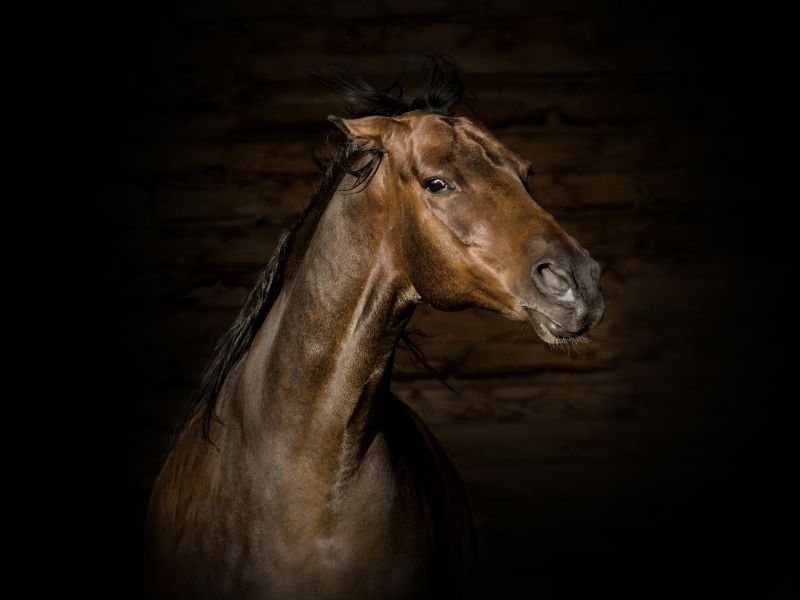
Signs of Distrust
Horses are sensitive animals that can quickly detect potential threats or dangers.
Recognizing and understanding the signs of distrust that a horse might display is crucial to avoid escalating the situation and maintain a safe environment for both you and your horse.
Here are some signs of distrust in horses:
Running Away From You
If a horse runs away from you when you approach or try to catch them, it might indicate that they don’t trust you.
This behavior could result from previous negative experiences with humans.
To alleviate their fear, approach the horse calmly and slowly, and use gentle body language to avoid scaring them.
Tight Bottom Lip
A horse’s bottom lip can reveal much about their emotional state.
If their bottom lip is tight and pulled up, it could indicate that they are nervous, stressed, or uncomfortable.
Pay attention to this subtle cue and adjust your actions to help the horse feel more at ease.
Tense Nostrils
Tense nostrils can signal anxiety or fear. If a horse’s nostrils are pinched or flared, they may be uncomfortable and distrustful of their surroundings.
In this situation, try to identify and remove the source of their discomfort to help them feel more secure.
Tail Moving Quickly Or Not At All
A horse’s tail provides valuable information about their mood and emotional state.
If the horse’s tail is moving quickly, they might be agitated or upset. If the horse’s tail is not moving at all, they could be fearful or anxious.
Be mindful of these cues and modify your behavior or the environment accordingly to help your horse feel more comfortable.
Pinned Back Ears
When a horse’s ears are pinned back, it’s a clear sign that they are angry, upset, or uncomfortable.
This behavior can also indicate that the horse is about to bite or kick.
In such cases, it’s essential to give them space and avoid sudden movements to prevent any accidents.
Turning Hind end Towards You
When a horse turns their hind end towards you, it can be a sign of distrust or disrespect.
This behavior might indicate that they are feeling threatened or defensive and are positioning themselves to protect themselves or even use their hind legs to kick if necessary.
It’s important to be cautious and aware of your safety when a horse exhibits this behavior.
Recognizing these signs of distrust is crucial to avoid potentially dangerous situations.
If you notice any of these behaviors in your horse, take a step back and try to identify the cause of their discomfort.
Responding appropriately to these signs can help you build trust with your horse and improve your relationship over time.
Always remember that patience and understanding are key factors in building trust with a horse.
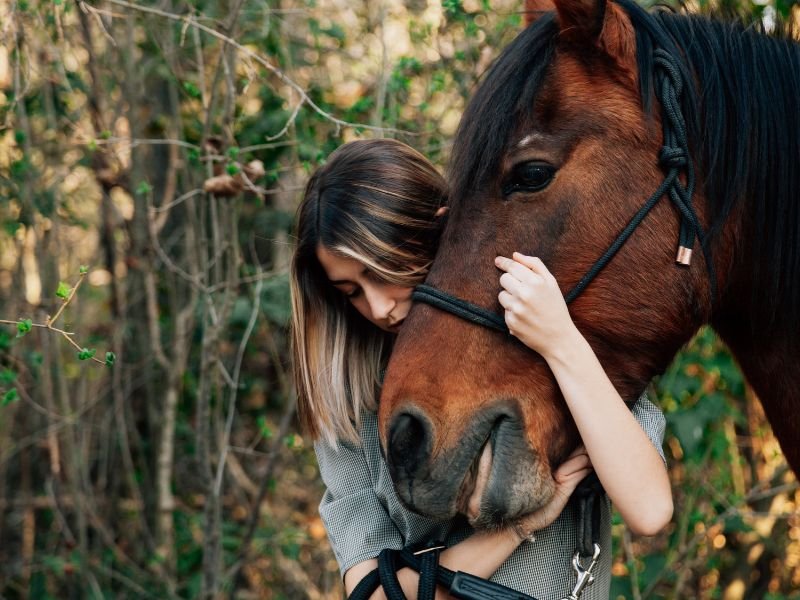
Benefits of Building Trust with Your Horse
Building trust with your horse is one of the most important aspects of horse ownership.
Not only does it make for a better relationship between you and your horse, but it also has many benefits that can improve your overall experience with your horse.
Improved Communication
One of the primary benefits of building trust with your horse is improved communication.
When your horse trusts you, they are more likely to listen to you and follow your commands.
This can make riding and training much easier, as your horse will be more receptive to your cues and signals.
In turn, this can make for a safer and more enjoyable experience for both you and your horse.
Increased Confidence
Building trust with your horse can also increase your confidence as a rider.
When you know that your horse trusts you and will listen to you, you can feel more comfortable and secure when riding.
This can help you develop your skills as a rider and make you feel more confident in your abilities.
More Enjoyable Riding Experience
Finally, building trust with your horse can make your overall riding experience more enjoyable.
When you have a strong bond with your horse, riding can become a fun and rewarding activity that you look forward to.
You may even find that your horse is more willing to try new things or go on new adventures with you when they trust you.
Examples of Situations Where Trust is Critical
Trust is critical in many different situations when working with horses.
For example, when the vet needs to do something uncomfortable, trust can help to keep them calm and reduce their stress levels.
When trail riding, trust can help your horse navigate difficult terrain and obstacles with confidence.
And in competitive events, trust can help your horse perform at their best and feel confident in their abilities as well as being in a different place.
Overall, building trust with your horse is a critical aspect of horse ownership that can have many benefits.
By developing a strong bond with your horse, you can improve communication, increase confidence, and enjoy a more rewarding riding experience.
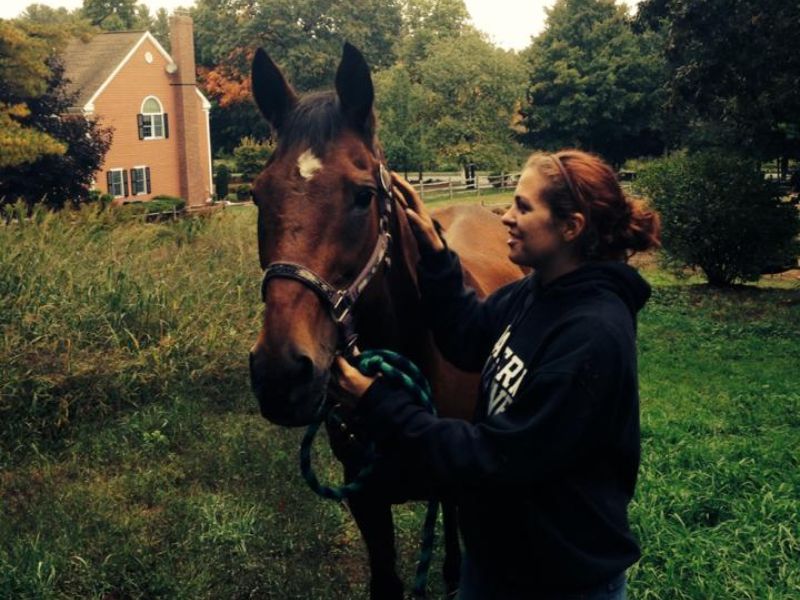
My Story Of Gaining Trust From My First Horse Kyia
As I gazed into her deep brown eyes, I knew that Kyia was the one. Actually my mom didn’t give me a choice. It was I buy her or I don”t get a horse.
She was a 17-year-old OTTB broodmare who had been neglected and had trust issues with people.
As a young and inexperienced trainer, I knew that building a relationship with Kyia based on trust and respect would take time and patience.
Kyia was head shy and nervous around me, often throwing her head up and away when I tried to pet her face or put a halter on her.
Catching her in the paddock was a challenge, and she was very herd-bound to the other horses.
But I refused to give up on her. I started with join-up and basic groundwork, taking it slow and not rushing her. Over time, she began to trust me.
Months later, Kyia would come when I called her, bow for carrots, and relax with her head down as I groomed her in the paddock.
Her ears became less active and on edge when we worked together, her breathing was relaxed and slow, and her eyes looked softer.
Her whole demeanor changed from the flighty, nervous, untrusting horse she was before. It was a beautiful transformation.
One day, Kyia hurt her leg and needed to be in a small area to keep from running.
She was in a round pen with metal fencing and unfortunately ended up rolling, getting her hind legs stuck between the top bar.
Someone at the barn screamed for me. I ran down to the paddock and went inside over to Kyia.
She saw me and relaxed, hanging there quietly, practically upside down.
I must have had an adrenaline rush because I put my thighs under her hindquarters in a squat and lifted her up.
She was able to pull her legs out of the fence.
She just laid there looking back at me and then calmly got up and came over to sniff me.
That was trust, I realized.
Alot happened between that day and her last.
But Kyia trusted me until the end of her life, and she now rests in green pastures and fields at peace.
It’s amazing what can happen when you earn a horse’s trust, and I will never forget my journey with Kyia.

Share Your Horse Story
I would love to hear your story about building or gaining your horse’s trust!
If you have a personal experience you’d like to share, please send it to [email protected] to be considered for publishing on my blog.
Your story could inspire and educate other horse owners and riders who are also working on building trust with their horses.
Include how you built trust with your horse and the signs you’ve observed that show your horse trusts you.
As Lynn Palm, a Professional Horsewoman specializing in American Quarter Horses, said,
“Trust is the foundation of all successful relationships, including those between horses and humans. When we earn a horse’s trust, we gain their cooperation and respect, and the possibilities for growth and learning become endless.”
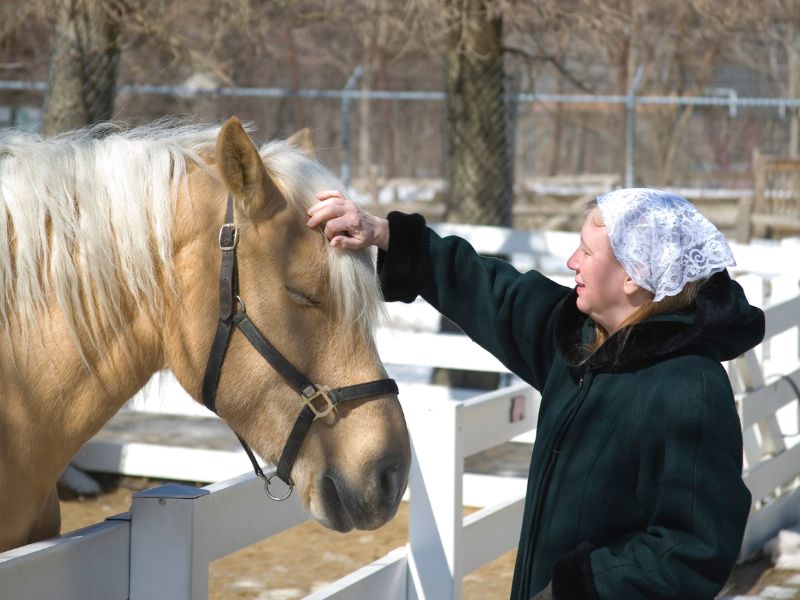
Building Trust with Your Horse: Key Takeaways and Next Steps
Building trust with your horse is essential for effective training, handling, and riding.
By understanding equine behavior and body language, you can interpret your horse’s messages correctly and respond appropriately to their needs.
In this post, we have explored the signs that indicate a horse trusts you, the importance of understanding equine behavior and body language, and the benefits of building trust with your horse.
We have discussed practical tips and strategies for recognizing and interpreting equine body language, and the signs of distrust that should be avoided to build a strong relationship.
To build trust with your horse, start by observing their behavior and body language and responding appropriately to their needs.
Remember to look beyond general signs and to listen to your horse’s messages to understand their individual behavior patterns.
Share your own experiences with your horse by emailing us at [email protected], and check out my other post on “How to Get a Horse to Trust You” for additional strategies and tips on building trust with a new horse.
With time and effort, you can build a strong relationship based on trust and respect, which will enhance your riding experience and deepen your bond with your horse.
By recognizing these signs that a horse trusts you, you’ll be able to strengthen your bond and develop a deeper connection with your equine partner.
Cheers, Kacey
P.S. Did you like this article? Gallop over to:

